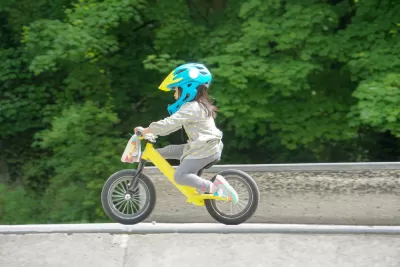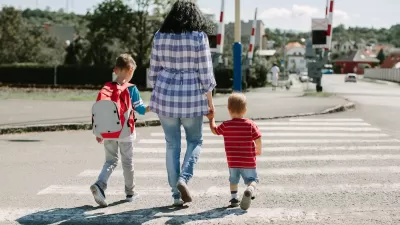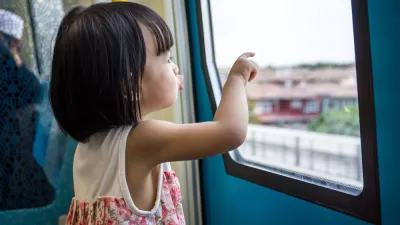Designing neighborhoods with children in mind could reduce traffic fatalities and improve the health and well-being of kids.

"Kids today aren’t lazy," argues Scott Berson. "They aren’t addicted to screens, at least not any more than adults. But the way we’ve built our modern environment restricts, with almost authoritarian precision, the ability of kids to do anything independently — including play outside."
Berson argues that our built environment traps kids in car-dependent, sedentary lifestyles, "About 52% of families say they live in suburbs, though this definition is a little hazy. Let’s think of the suburb as a car-focused area, usually on the outskirts of a larger city, with houses separated from offices separated from stores by miles and miles of roads. There are few sidewalks, and few bike trails or lanes. There is no real bus or transit system." These environments, Berson says, are "agonizingly boring to kids — and an area in which it is impossible for them to act on their need to 'try out' independence as they get older." It's impossible to exercise independence in "an environment designed to be driven and only to be driven." Meanwhile, despite the perception of suburban safety, "[t]raffic deaths — and child fatalities — are far more common in suburbs than in cities."
Berson believes "[w]e need to think of kids as full members of society and we need to design our neighborhoods for kids to have full, rich childhoods that let them grow into well-rounded members of our communities." He recommends three "simple to remember, but agonizingly difficult to implement" actions: "Connect the streets, mix the uses, and shrink the schools." Berson describes steps that cities can take to work toward these goals. "It will take creative thinkers and public leaders across the nation to begin to see the harm the environment we’ve built is doing to kids, and it will take bravery to implement even small changes."
FULL STORY: Op-Ed: Why Bad City Design is Failing Our Kids (And What to Do About It)

Maui's Vacation Rental Debate Turns Ugly
Verbal attacks, misinformation campaigns and fistfights plague a high-stakes debate to convert thousands of vacation rentals into long-term housing.

Planetizen Federal Action Tracker
A weekly monitor of how Trump’s orders and actions are impacting planners and planning in America.

In Urban Planning, AI Prompting Could be the New Design Thinking
Creativity has long been key to great urban design. What if we see AI as our new creative partner?

King County Supportive Housing Program Offers Hope for Unhoused Residents
The county is taking a ‘Housing First’ approach that prioritizes getting people into housing, then offering wraparound supportive services.

Researchers Use AI to Get Clearer Picture of US Housing
Analysts are using artificial intelligence to supercharge their research by allowing them to comb through data faster. Though these AI tools can be error prone, they save time and housing researchers are optimistic about the future.

Making Shared Micromobility More Inclusive
Cities and shared mobility system operators can do more to include people with disabilities in planning and operations, per a new report.
Urban Design for Planners 1: Software Tools
This six-course series explores essential urban design concepts using open source software and equips planners with the tools they need to participate fully in the urban design process.
Planning for Universal Design
Learn the tools for implementing Universal Design in planning regulations.
planning NEXT
Appalachian Highlands Housing Partners
Mpact (founded as Rail~Volution)
City of Camden Redevelopment Agency
City of Astoria
City of Portland
City of Laramie





























